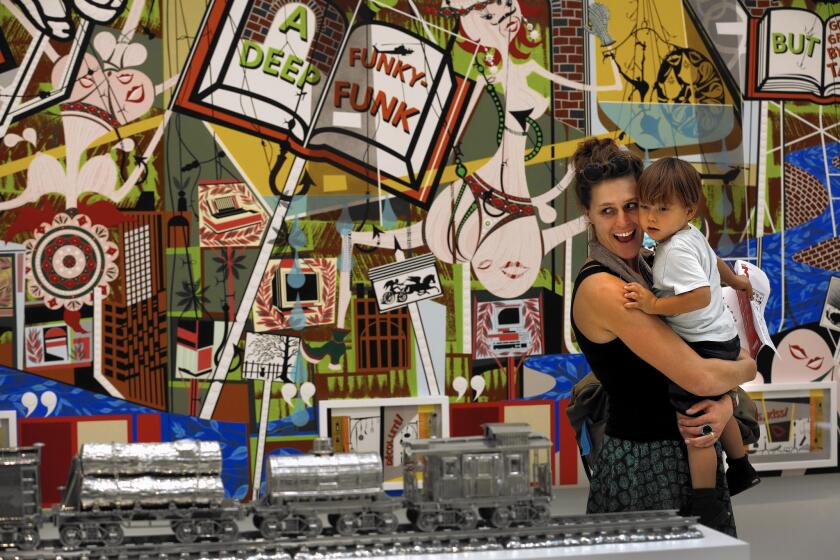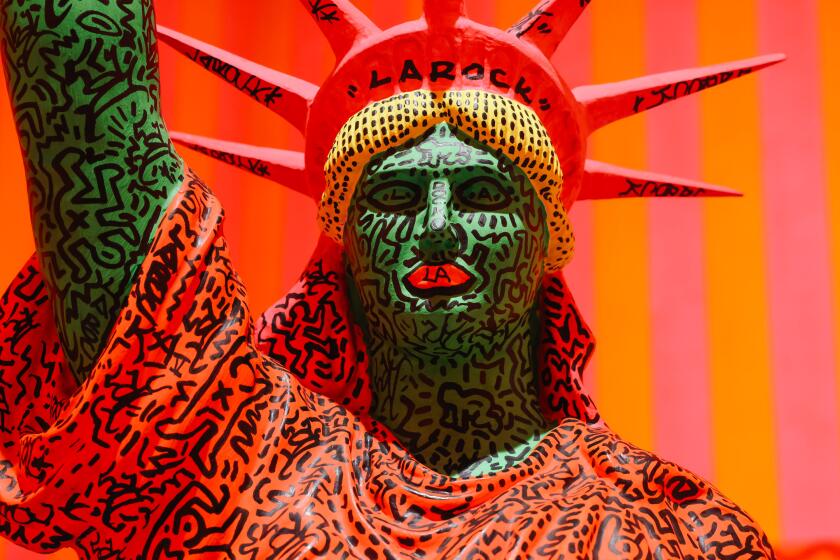The Broad announces massive expansion that will increase gallery space by 70%
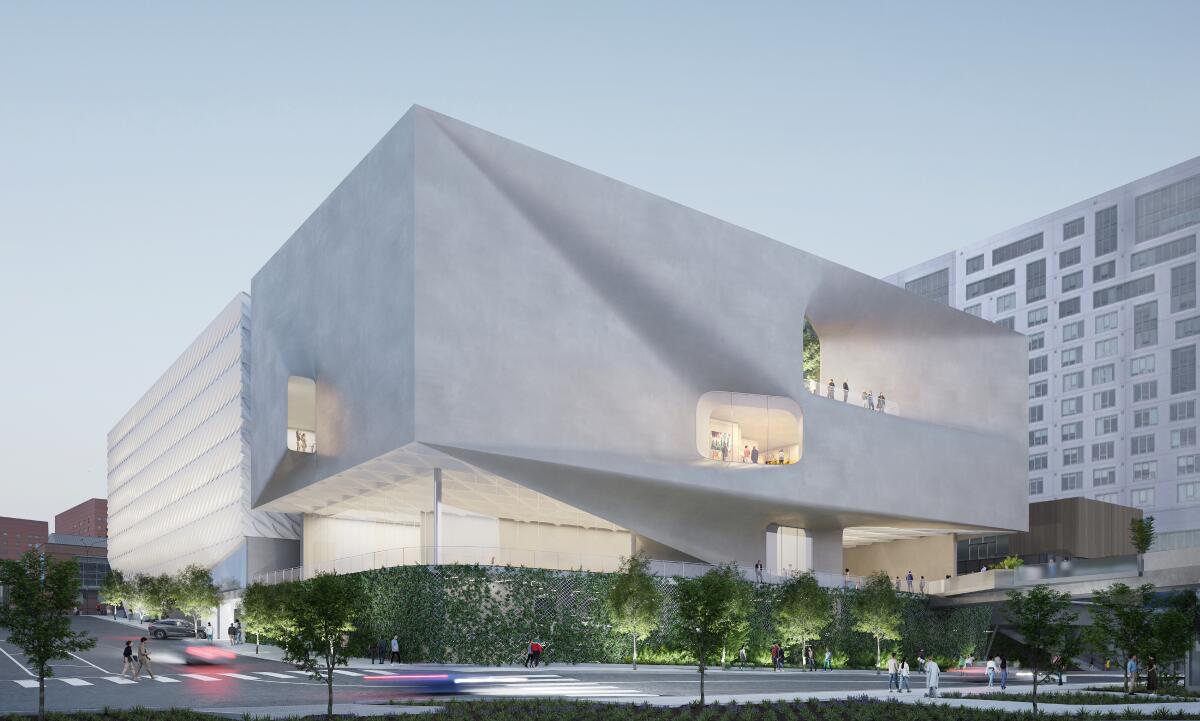
The Broad on Wednesday announced a $100-million building expansion that will increase gallery space at one of Los Angelesâ most popular museums by 70%. The sweeping plans could provide a critical boost to downtown L.A., which has seen sluggish recovery since the pandemic and the rise of remote work left the cityâs core a shell of what it had once been.
The 55,000-square-foot addition is designed by the New York-based firm Diller Scofidio + Renfro, which designed the original museum â built at a cost of $140 million. It will rise directly behind the existing structure and is expected to break ground in early 2025, with completion anticipated in advance of the 2028 Summer Olympics.
Joanne Heyler, founding director and president of the Broad, said in an interview that the plan has been in the works since late 2022 after it became clear that the Broad had exceeded its expected visitor projections. When the Broad opened in 2015, the museum anticipated hosting approximately 250,000 visitors a year, Heyler said, and by last year more than 900,000 people were walking through the doors annually. To date, more than 5.5 million guests have seen the art inside the building.
One of Eli Broadâs goals in building his namesake contemporary art museum in downtown Los Angeles was to help make a stretch of Grand Avenue a premier destination.
âThe fundamental mission of the Broad museum is to bring a large audience, and to grow an audience for contemporary art,â Heyler said, referring to Eli and Edythe Broadâs collection dating from the 1950s. Edythe, now 88, is still collecting. Eli died in 2021. âThat was what the Broads wanted. It was a large reason for founding the museum to begin with.â
About 200 pieces of art are on display at any given time. The ultimate goal, Heyler said, is to share much more of the museumâs collection of over 2,000 works of contemporary art, including extensive holdings of influential artists such as Andy Warhol, Jean-Michel Basquiat, Jeff Koons, Barbara Kruger, Roy Lichtenstein, Takashi Murakami, Cindy Sherman and Kara Walker.
The addition will take the form of a second building connecting to the original museum via a third-floor door and passageway leading to a courtyard with views of the sky. From there guests can make their way down through the addition, which features large new galleries on the first, second and third floors, as well as a unique grouping of areas on the second floor that acts as an immersive storage vault featuring racks of art from the Broadâs collection.
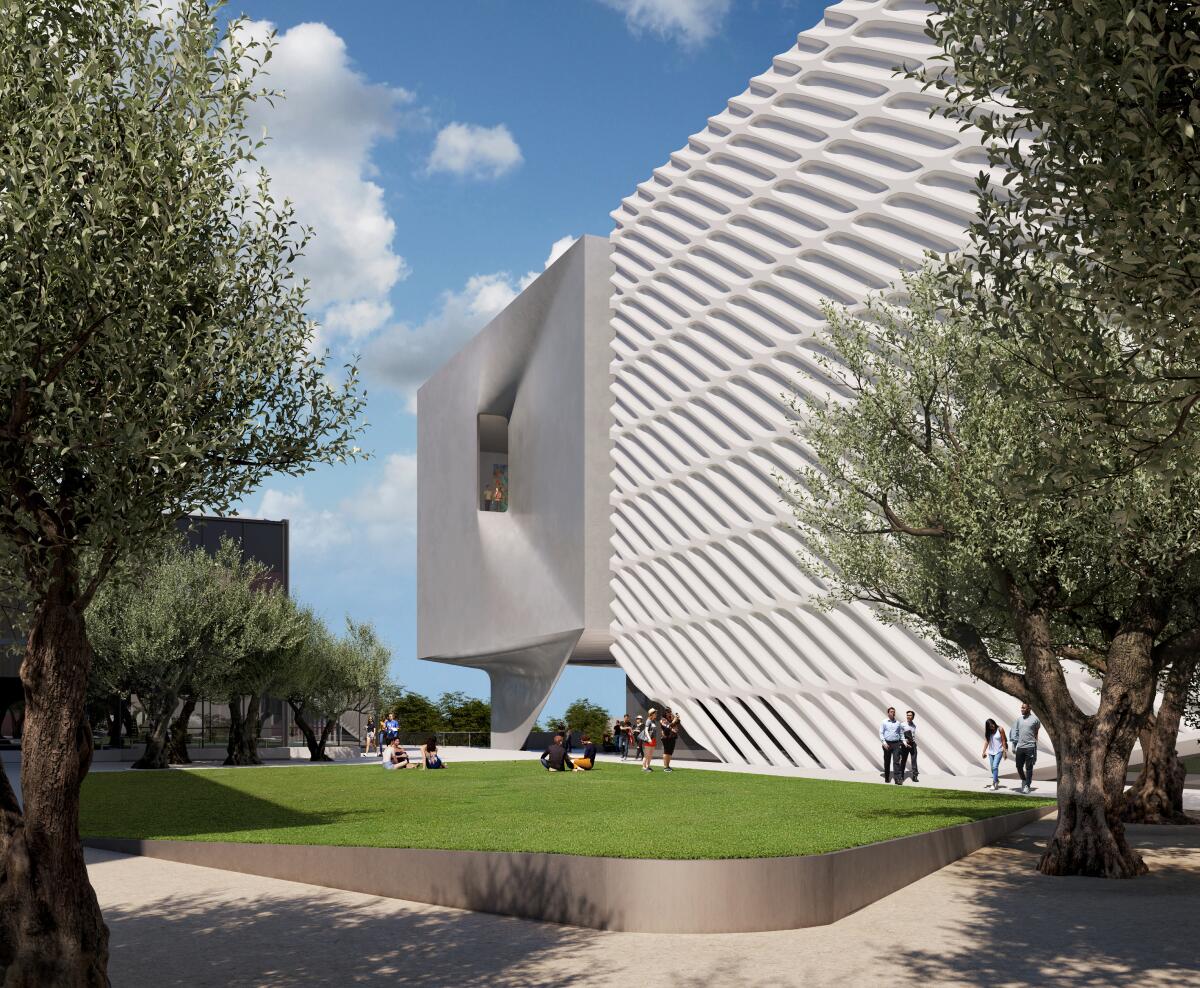
The new building essentially inverts the existing Broad museumâs architectural language, which famously and sometimes controversially features a two-layer design scheme referred to as the veil and the vault. The veil is the buildingâs bright-white outer shell. It consists of more than 2,500 honeycomb panels made of fiberglass-reinforced concrete, which serves as a kind of peekaboo shade for an interior shell made of glass. At the narrowest points, about 36 inches of space exist between the veil and the glass at the front of the building â making window washing a notoriously difficult task. The veil is also prone to streaking in the rain.
The vault is the smooth, sculpted gray core of the buildingâs interior, which visitors ride up and through as they ascend the escalator to various gallery floors. The addition is more or less the vault without the veil â and renderings show the same smooth, gray architecture on the outside of the building, which sits side by side with the original veiled building.
âThe idea is that it adds new facets to the visitorâs journey through the expanded Broad,â says Heyler. âIn a way the existing building is always sort of talking to you. And there will be a similar thing happening with the expansion, but just a slightly different conversation, like youâre listening to its sibling.â
The Broad museum in downtown L.A. has been a huge hit. Will a bigger building be worth the $100-million budget?
Admission will remain free, and the expansion will not change the advance reservation option â which is encouraged â whereby guests can make reservations up to a month in advance. Visitors without reservations must wait in a daily standby line.
Ann Philbin, director of the UCLA Hammer Museum whoâs stepping down this fall, says the Broadâs collection tells an amazing story of a particular time that is regularly expanding as Edythe Broad and Heyler continue to add âsome of the most important artists of our current time to the collection.â
âThis is just another sign that our museums are thriving and thereâs a demand for them from our audiences,â says Philbin.
One of those artists is Mark Bradford. Bradford says the expansion extends the âmulti-layered, multi-generational, multi-ethnic, multi-racialâ conversation of L.A.
âMore room for more artists is a good thing,â says Bradford. âAny time you can carve out space for ideas, and expand that â as an artist â I think itâs great. Because thatâs really what this is doing. Itâs carving out more space for ideas. And thatâs what I see art as: a bunch of ideas living together in material form.â
The Broad debuts Keith Haringâs first-ever L.A. museum exhibition, an ambitious survey that includes more than 120 works, personal ephemera, immersive environments and the artistâs mixtapes.
The new building will also offer more spaces for guests to relax and gather. There will be two top-floor, open-air courtyards featuring art meant for the outdoors, as well as a number of live programming spaces with built-in light and sound infrastructure where the museum intends to expand on its roster of public programming with live performances, talks, screenings, family-oriented workshops and school programs, as well as concerts and multimedia installations.
âIâm excited to open up a new chapter for the Broad and make possible new and deeper experiences for our visitors,â says Heyler, adding that the museum would like to be able to show, for example, more than just the two or three monographs that it currently displays. âWe work hard as a museum to be very welcoming to everyone, no matter how much art knowledge theyâve gained, no matter what their background is or where theyâre coming from in L.A. or beyond. And to do that alongside real intellectual rigor in our programs and in our shows.â
Since the Broad opened in 2015, much has changed along Grand Avenue, including the addition of the $1-billion, 45-story Frank Gehry-designed Grand LA, which is situated on a former parking lot across from the Broadâs neighbor, Walt Disney Concert Hall, and features more than 176,000 square feet of shops and restaurants. This structure has been considered the cornerstone of the larger Grand Avenue Project, which is a plan to create a thriving civic and cultural corridor including the Music Center, the Broad, the Museum of Contemporary Art and the Colburn School.
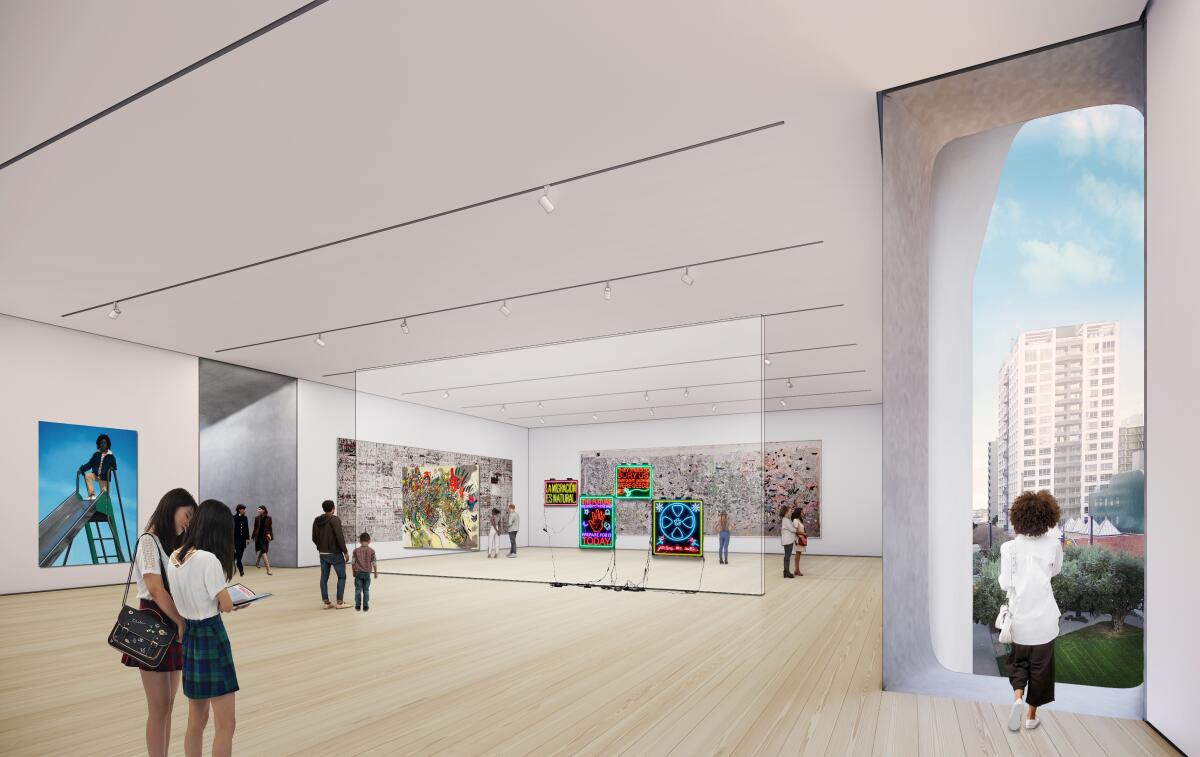
Even with these popular destinations lining its sidewalks, the Grand â and downtown in general â has not transformed into the thriving center of urban living that boosters had hoped for. Many of the restaurants and bars that once attracted the affluent residents of the refurbished lofts that regularly opened in the early 2010s have closed. This January, the ultra-trendy 182-room Ace Hotel near Broadway and Olympic closed its doors, signaling the end of a decade-long era of downtown revitalization hopes. Dense office towers have far fewer workers heading out for lunch, dinner and after-work entertainment. A significant amount of storefronts stand vacant, and complaints about the intractability of problems facing businesses due to a large unhoused population have gone unabated.
In 2020, while the Grand was still being built, Times classical music critic Mark Swed wrote, âDone right, the Grand has the potential to make Grand Avenue the cultural beacon for a city without a center, a place that stands for and is for all of L.A. Done right, Grand Avenue becomes the Grand motivator, elevating a cityâs spirit and inspiring it to deal with pressing needs.â
Heyler takes this description of Grand Avenue to heart, and sees the Broad expansion as part of the ongoing progress toward that goal â which has been halting over the years. She points out that the expansion will feature a new covered plaza leading to the recently opened Grand Avenue Arts / Bunker Hill Metro station.
âThis building will create a very dynamic experience for those who will approach Grand Avenue or come to attend events at one of the performing venues,â she says. âIt will be something of a gateway for all of Grand Avenue, its institutions, its businesses and its restaurants.â
More to Read
The biggest entertainment stories
Get our big stories about Hollywood, film, television, music, arts, culture and more right in your inbox as soon as they publish.
You may occasionally receive promotional content from the Los Angeles Times.
